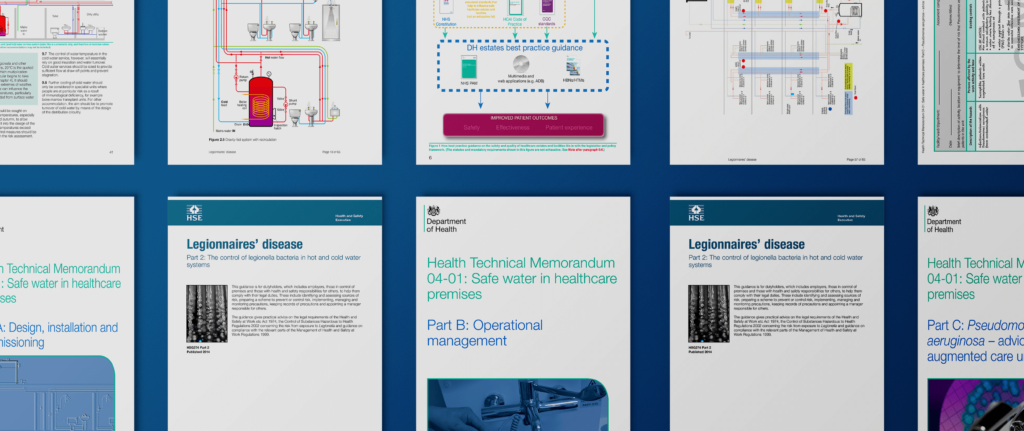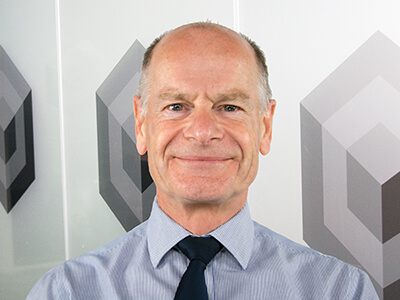courses in your basket.
By Tony Green and Les Payne
Water safety is a crucial aspect of maintaining a healthy and safe environment in healthcare facilities.
The Water Safety Group (WSG) within a Trust/Health Board has the responsibility to comply with current guidance and regulations regarding water hygiene. The WSG plays a vital role in implementing measures to reduce the risk of bacterial contamination and ensuring an effective response to any incidents that may occur.
In this article, we will explore the key concerns, technologies, practices, control measures, and training recommendations related to water safety in healthcare facilities, with our 6 key considerations for healthcare estates professionals.
To comply with current guidance, the body's WSG should focus on several key areas and take specific actions. Firstly, it is important to have a well-structured water safety plan based on a thorough water risk assessment. This plan should include a written scheme of control and appropriate precautions to ensure its effectiveness.
Secondly, demonstrating the competency of staff and contractors involved in water safety is crucial. Adequate training should be provided to ensure awareness and understanding of hygiene procedures and regulations.
Additionally, establishing effective communication channels for reporting operating or monitoring concerns to the Water Safety Group or relevant designated managers is vital.

Lastly, setting up response targets and promptly addressing any concerns is necessary to ensure the required remedial action is taken and documented. WSGs are also now having to contend with ever increasing cases of antimicrobial resistant (AMR) organisms. Guidance is therefore rapidly changing and potential sources continually determined.
Trusts and Health Boards should consider using various technologies, practices, and control measures to minimise the risk of bacterial contamination and improve response to incidents. Implementing appropriate monitoring regimes for hot and cold water services is crucial in ensuring the safety of individuals exposed to waterborne pathogens.
Technology can assist in this process by enabling remote monitoring, temperature profiling, and the use of automatic flushing and purging devices to control stagnant water.
Furthermore, the use of advanced water treatment technology can be considered as a secondary means of control, complementing temperature control in complex hot and cold water systems.
A future application of technology could be the flagging of any non-compliance events, either electronically (or through the use of Artificial Intelligence) passing information to the relevant manager.
This would improve response times, and therefore mitigate opportunities for waterborne pathogens to proliferate which in turn minimises risks to health.
During new-build or refurbishment projects, it is important to prioritise factors that optimise water hygiene. Collaboration between designers and maintenance staff is vital to ensure full access for servicing and infection control.
Applying Hazard Analysis Critical Control Point (HACCP) assessments, similar to those used by NASA, can help evaluate risks at each stage of the process.
Identifying contamination sources and considering ways to reduce risk should involve the various disciplines within the WSG.
To improve water safety audit and risk assessment, it is advised to have at least two assessors independently evaluate the same facilities.
This approach helps ensure that all potential defects and hazards are identified, reducing the likelihood of oversight or incomplete assessments.
One of the main risks within the Healthcare sector is stagnation of water. Under utilised outlets and facilities being one of the principle causes.
Where sporadically used outlets have been identified they require to be flushed safely at least weekly or twice weekly depending on the risk assessment, utilising nursing and housekeeping staff may help in this process.
Proper training is essential for staff involved in water safety within hospitals. All staff should receive training on water hygiene and the risks of cross-contamination to avoid potential infections.
Additionally, key staff members, including management and senior finance managers, should receive Legionella training to understand the requirements of strict hygiene procedures and associated costs.
Maintenance personnel should receive comprehensive training on topics such as Thermostatic Mixing Valves/taps and localised disinfection procedures, with a focus on water contamination risks. It is also important for external contractors working within the Trust/Board to receive adequate training in water safety protocols.

Current guidance in HTM 04-01 part B states for example that anybody working on a water system should have received adequate hygiene awareness training appropriate to the tasks they are undertaking.
Unvented hot water systems training is equally as important to ensure compliance with section G3 of the Building Regulation.
In conclusion, complying with the guidance outlined in HTM 04-01 is crucial for maintaining water safety in healthcare facilities. The recommendations provided by Tony Green and Les Payne highlight the importance of robust water safety plans, competent staff and contractors, effective communication, advanced technologies, optimised practices, thorough risk assessments, and comprehensive training.
To support the training needs of healthcare professionals involved in water safety, we offer a range of City & Guilds Accredited Legionella training courses specifically designed for the healthcare sector. These courses provide the necessary knowledge and skills to control, manage, and appreciate Legionella risks in different healthcare environments.
By following these guidelines and investing in proper training, healthcare providers and facilities management firms can ensure the provision of safe and hygienic water, mitigating the risk of waterborne diseases and maintaining the well-being of patients, staff, and visitors.
0333 121 1215 | info@ppltraining.co.uk

Tony is a Water Hygiene Training Manager with over 40 years in the water industry; 10 years of which as a service engineer and 30 years within training and education. Tony has extensive knowledge and experience in legionella control and has trained some of the country's leading facilities management and construction companies, both in the UK and abroad.

Les has over 35 years' experience within the air and water hygiene industry. Les’ accomplishments to date include establishing a UKAS (formerly NAMAS) accredited laboratory to test for legionellae, water quality and fungi.